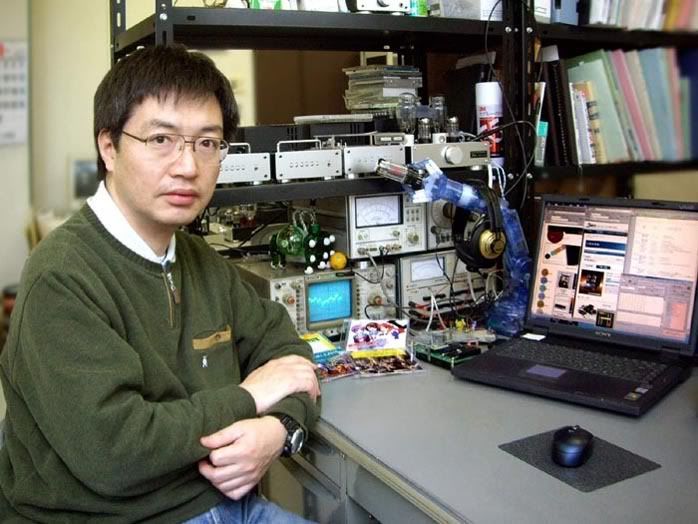[size=small]Here is the comment from TU-882 designer Mr.Fujita : [/size]
The first TU Series product launched in 1986. Mr. Fujita has been one of the engineers instrumental in driving developments of these vacuum tube kits for the past many years.
Mr. Fujita was born in Osaka in 1956 and raised in Fukuoka. He became interested in electronics in his higher elementary school grades and began to construct germanium radios and transistor radios. His first love with classical music was The Blue Danube sung by the Vienna Boys' Choir he heard in his junior high days. He eventually fell under the spell of music and audio. Soon he found himself gathering vacuum tubes from abandoned TVs and with humble parts permitted by his limited pocket money, he began building simple amplifiers or transceivers on aluminum lunch boxes or steel cookie cans. At the same time, he indulged in railroad models and made HO gauge trains of his own. It was during these junior high school days also that he obtained his HAM operator's amateur radio license.
In 1980 when a university student, he bought the first-gen Sony Walkman, then a revolutionary product. From then onwards, he became interested in portable audio in general. The car audio in his first set of wheels was this Walkman plus a DIY IC amplifier. Busy schedules filled up with lectures and studies prevented him from building his home hifi amps and he settled for Marantz and a pair of Diatone DS-25B 2-way monitor, with the speakers still in use today. Then he discovered Dixieland jazz at a club and it became one of his favorite music genres.
After graduating from Tokai University with a communication engineering degree, Mr. Fujita landed a job designing electronic systems for an automobile manufacturer before joining Elekit. In his present position, Mr. Fujita's life-long passion for audio electronics, model making and electro-mechanical engineering have finally found perfect solace and satisfaction. The solid DIY term of his youth helps him conceptualize, design and develop the TU series of amplifiers and CD player among many other Elekit products.
================================================== ========
permitting the volume control to be advanced to somewhere between the 10 and 12 o'clock positions where pots generally yield superior sound which may have the additional beneficial effect of lowering the apparent self-noise of the amp. This really does not make sense.
In his opinion, the gain of TU-882R/AS is
designed perfect.
Matching the impedance is important only to convey the power of the amplifier to the headset in most effective manner.
However, having the best sound quality is another story.
Matching the impedance could cause distortion and low damping. You need to see the balance of the impedance matching and good sound quality.
As the said headphone, Senn HD650, seems to convey the power very effectively, it no longer has to be connected to high impedance. Connect it to low impedance and get the best sound out of it. Low distortion and high damping.
As you know, the vacuum tube amplifier has very low damping, 5 or 10 at most, compared to a semiconductor amplifier having 100-200 damping. Connecting it to low impedance could lead to high damping and low distortion, a better sound quality, which must be something that all users want to achieve.
Also, TU-882R/AS is designed to best match commonly used headsets, and focusing only on those high-impedance headsets is not a good idea.
Could this explanation help the situation? I hope so...
Cheer!!






